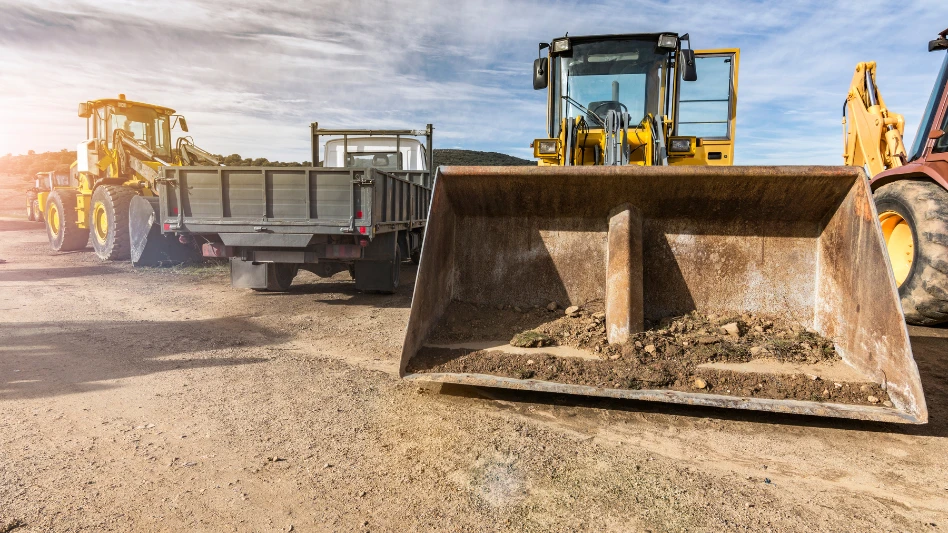 Plants and hardscapes must work together to create a great design.Most of us in the green industry enjoy taking the opportunity to review and critique landscape projects that were built by our competitors. We’re usually able to pick out something we might change, or we have a different vision for the property. But once in a while, you see a yard that simply works. We can’t always pinpoint why it works, but there’s something about the property that’s elegant and creative.
Plants and hardscapes must work together to create a great design.Most of us in the green industry enjoy taking the opportunity to review and critique landscape projects that were built by our competitors. We’re usually able to pick out something we might change, or we have a different vision for the property. But once in a while, you see a yard that simply works. We can’t always pinpoint why it works, but there’s something about the property that’s elegant and creative.
One of the most important elements that contribute to a great design is planting design. Plants aren’t the only part of every design, but they play a very important role and, if not done well, they can hinder a great hardscape design.
The problem many of us face is we struggle with choosing plants that create that perfect composition. Most of us know a lot about individual plants, but it gets more complex and difficult when we put them all together. We try to apply the design principles we know (scale, balance, repetition, etc.), but there seems to be more to planting design. And there is. Once you’ve learned some of the basic principles, you’ll find that it’s easier than you might have thought.
There are two simple rules: First choose your focal points, and then add the rest of the plants to complement them.
Choose Focal Points First
No matter what type of landscape or installation you are designing, you must have pieces that make your eye pause and look. These pieces need to stand out from the rest of the items by their features – size, shape or color.
How many focal points you need depends on the size of the space you are working in. If you use too many in one area it will begin to look busy and random. For an average front yard planting you really only need one larger specimen plant as your primary focal point and maybe one smaller one as a secondary focal point, along with a few accents like boulders or ornamental grasses.
Add Complementary Plants
The actual plants you choose now are critical because they need to complement the focal points.
- Don’t crowd your specimen plants with large shrubs or perennials. Instead, plant some low-growing evergreens, shrubs or groundcover around them. This way, if your specimen has an interesting trunk form, you don’t hide that characteristic.
- Compliment focal points with appropriately sized boulders, unless the boulder is the focal point, then don’t make it too big. Small rocks can look more like a do-it-yourself project.
- Try to plant groupings of plants instead of singles. Leave the singles to the specimen plants. Too many varieties will also look busy and random.
- Think of using contrast for plant combinations with different textures (bold vs. fine), forms (upright vs. spreading) and colors (dark green vs. yellow). Too much of the same thing will look bland. Varying the height and the form gives the best combination.
- Don’t put too much emphasis on flower color; instead look at the form and texture of the plant first, since that is what you will see most of the time.
- Think of foliage colors that work with the house exterior. Think contrast here, too. Don’t put a burgundy/red specimen in front of an orange/red brick house.
Choose your focal points wisely and complement them with contrasting, un-crowded plant groupings.
Try using these simple principles the next time you need to create a planting design. You’ll begin to understand why some projects you see really work well, and you’ll be able to apply it to your own designs.
 Choose the focal point of your landscape first, then complement it with other features.
Choose the focal point of your landscape first, then complement it with other features.
The author is product manager at DynaSCAPE.

Explore the December 2009 Issue
Check out more from this issue and find your next story to read.
Latest from Lawn & Landscape
- Analysis of an entrepreneur
- Terra Nova's Sedum Conga Line variety wins Best of 2024 Perennial award
- Different ways to distribute
- Case's 580EV electric backhoe loader wins Good Design Award
- Davey Tree promotes Dan Herms to VP, GM of Davey Institute
- Caterpillar's Cheryl H. Johnson set for April retirement
- Registration open for sixth annual Lawn & Landscape Technology Conference
- 12 interview questions to help you hire winners





